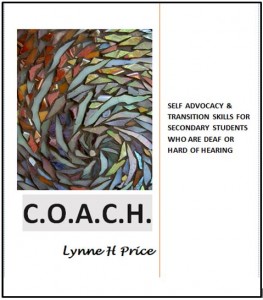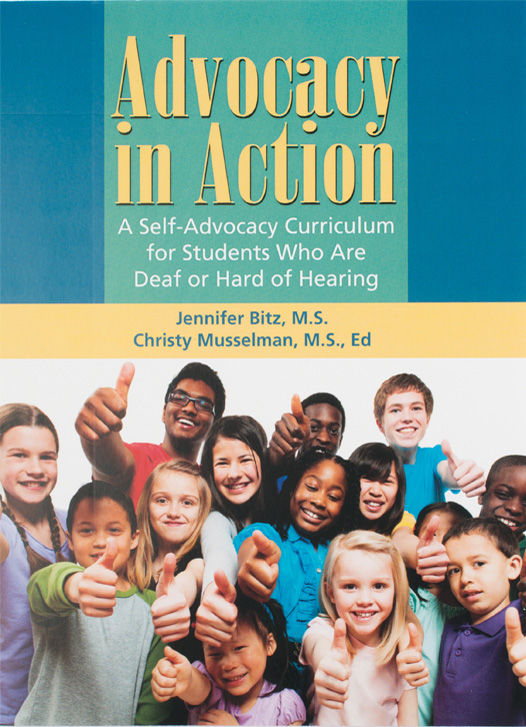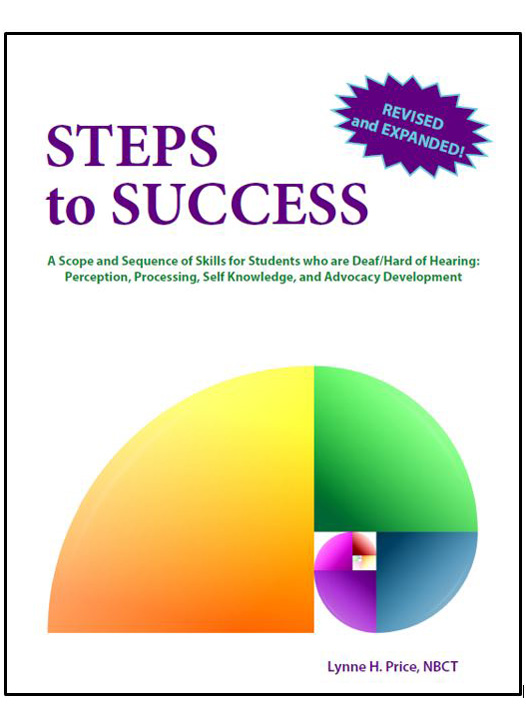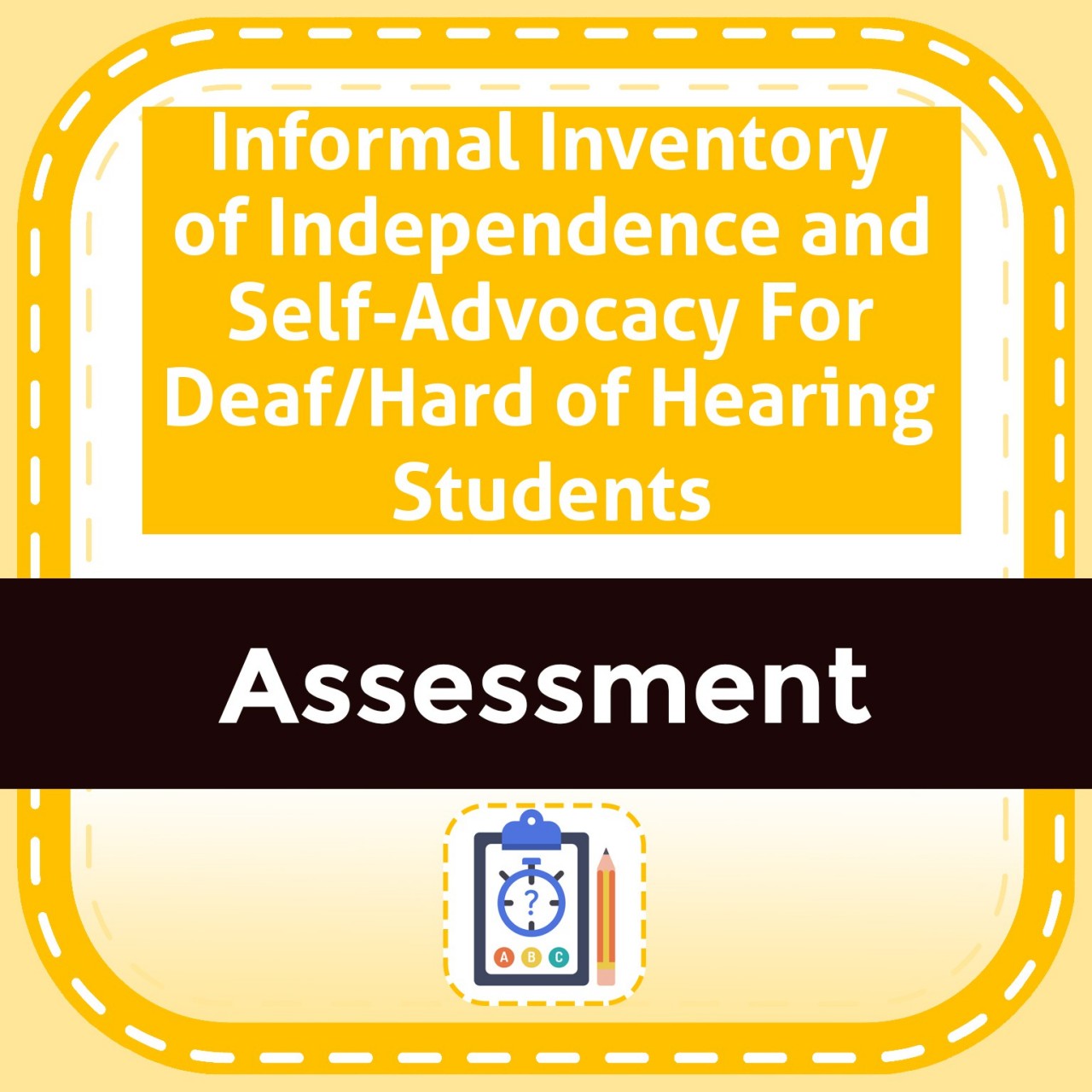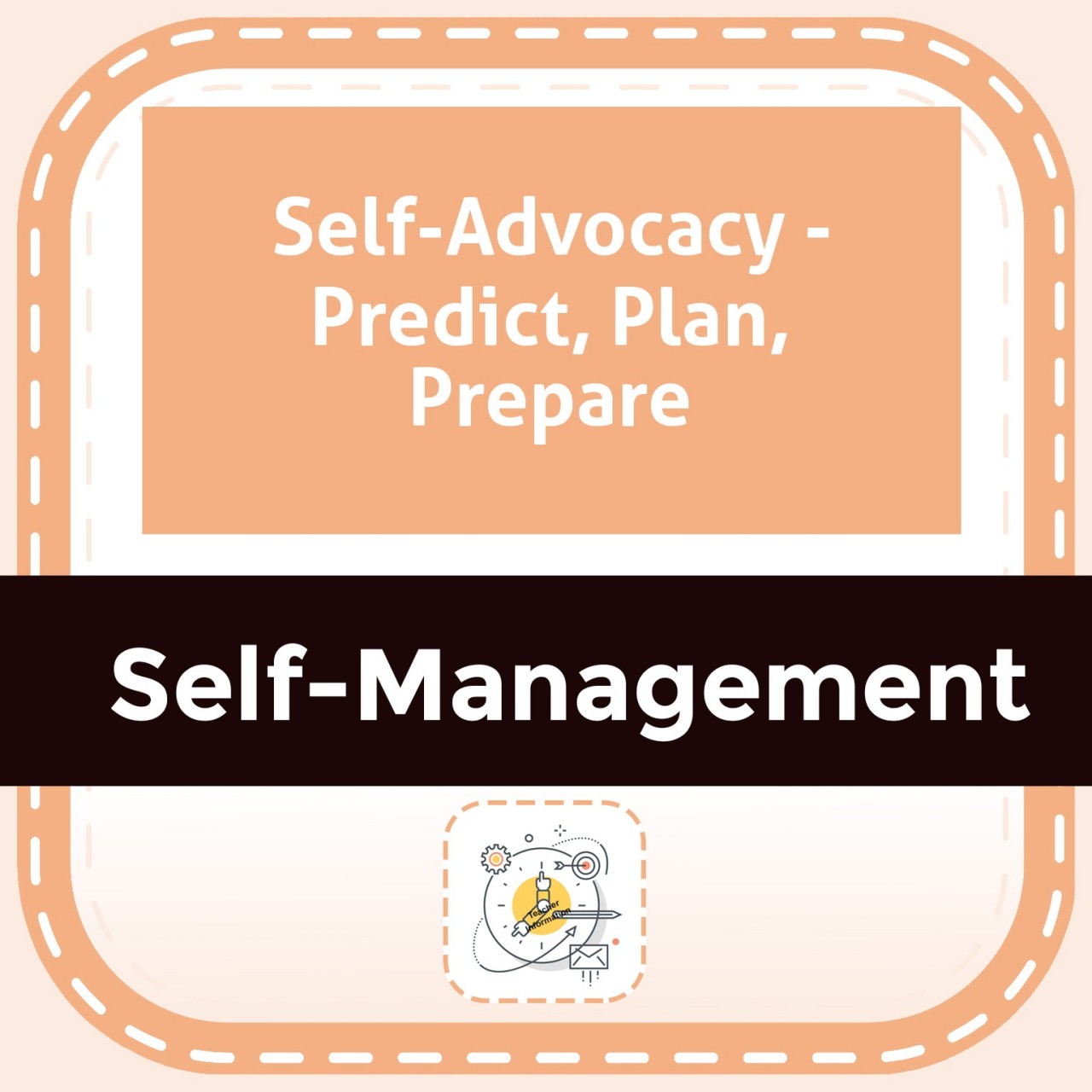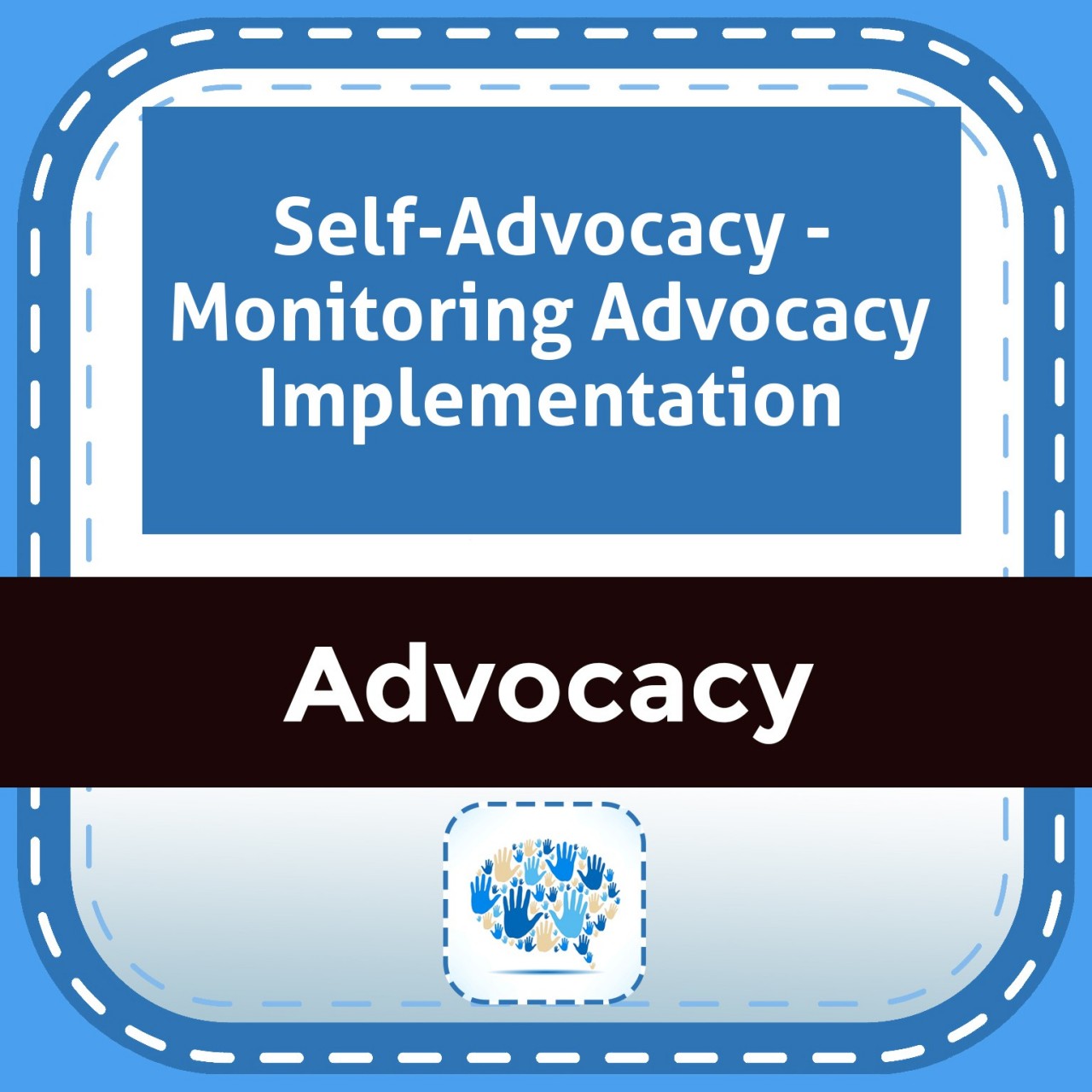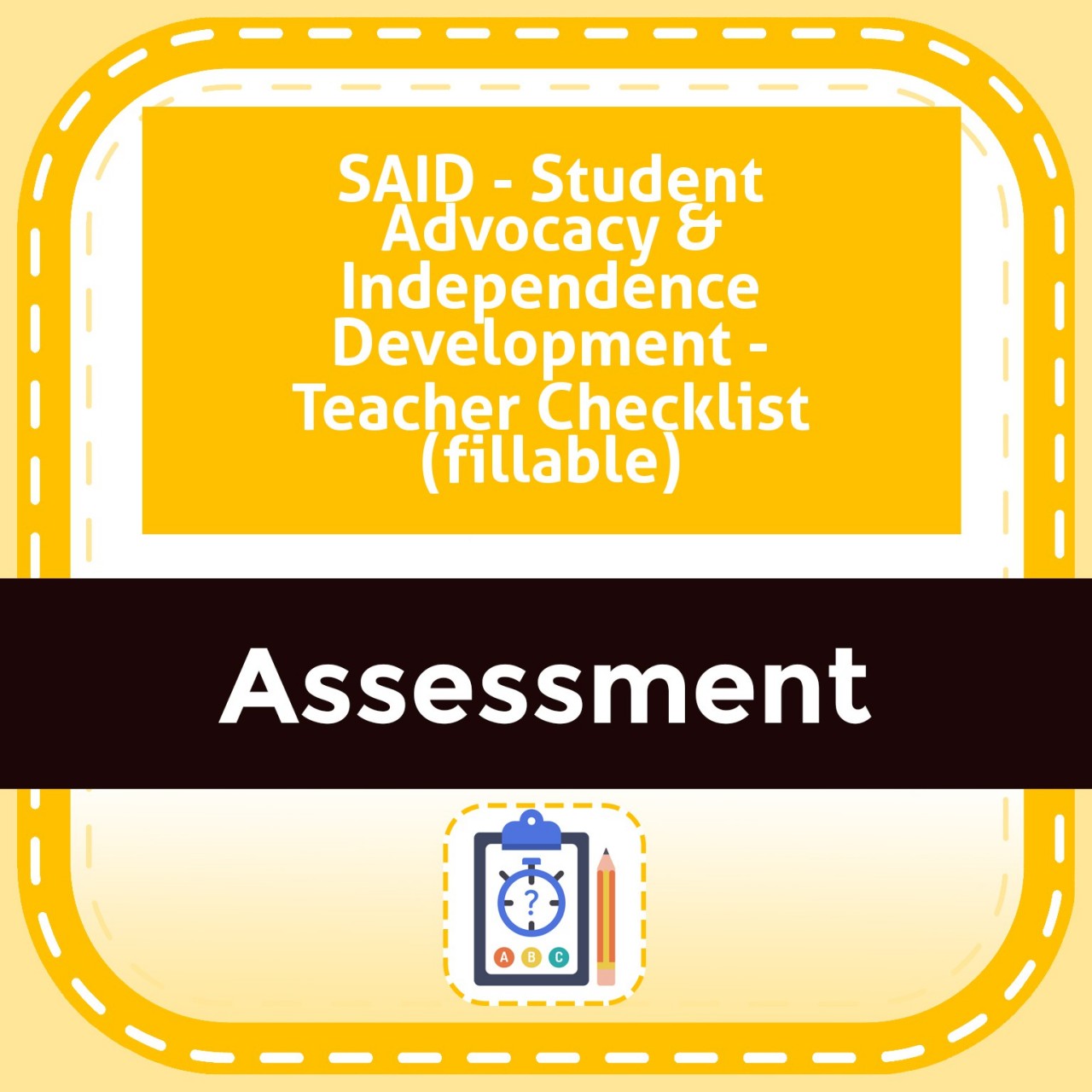Related Products
C.O.A.C.H.–Self-Advocacy & Transition Skills for Secondary Students who are Deaf or Hard of Hearing
$40.00For Professionals
- Amplification
- Assessment of Student Skills, Challenges, Needs
- Early Childhood: Infants, Toddlers, Preschool
- Hearing Loss – Identification, Impact and Next Steps
- IDEA Law Summary Information
- Language and Speech Development Issues
- Legal Issues in Serving Children with Hearing Loss
- Listening (Auditory Skills) Development
- Planning to Meet Student Needs
- Self-Advocacy Skills for Students with Hearing Loss
- Self-Concept: How the Child with Hearing Loss Sees Himself
- Social Skills
- Speech Perception & Learning
Related Teacher Tools Takeout Items
Informal Inventory of Independence and Self-Advocacy For Deaf/Hard of Hearing Students
Self-Advocacy – Predict, Plan, Prepare
Self-Advocacy – Monitoring Advocacy Implementation
SAID – Student Advocacy & Independence Development – Teacher Checklist (fillable)
Barriers After High School: Postsecondary Dropout, Careers, and Independence for Deaf & Hard-of-Hearing Students
Postsecondary Enrollment, Persistence, and Dropout
Enrollment Characteristics & Trends
- According to NDC’s “Undergraduate Enrollment of Deaf Students” report, among currently enrolled college students, 1.3% report that they are deaf.
- In that same report, a majority (51.8%) of DHH college students are enrolled in associate’s degree programs rather than bachelor’s, and fewer enroll in bachelor’s programs compared to hearing students.
- Between 2011 and the 2019–2020 academic year, the overall number of enrolled DHH postsecondary students has remained relatively stable, though disparities in completion persist.
- Importantly, DHH students on average delay college entry: in NDC’s “Postsecondary Enrollment and Completion for Deaf Students” analysis, DHH students enroll in college 3.7 years after high school, compared to 1.5 years for hearing students.
- DHH students also are more likely to take developmental coursework (i.e. remedial courses) — 37.1% vs. 28.0% for hearing peers in 2019–2020.
These enrollment and preparation gaps set the stage for greater risk of dropout or noncompletion.
Completion and Dropout Patterns
While NDC reports don’t always label “dropout rate” directly, completion gaps are evident:
- DHH students’ expectations for attaining degrees are high — e.g. 45.2% expect to complete a bachelor’s, 10.7% expect a doctoral degree — but the share who actually complete is lower.
- In the NDC Postsecondary Data Dashboard, among U.S. adults aged 25–64, 22.7% of deaf people have completed a bachelor’s degree or higher, compared to 38.4% of hearing people — a sizable completion gap.
- Over time, the share of DHH individuals with a bachelor’s degree has indeed increased (from ~15.5% in 2009 to 22% in 2022) — yet that mirrors gains in hearing populations. The attainment gap has not meaningfully narrowed.
- In NDC’s state-level reports, the gap in bachelor’s degree completion is also evident: for example, in California over 2018–2022, fewer DHH individuals obtained a bachelor’s degree than hearing peers (a difference of 14.7 percentage points). In other published research beyond NDC:
- A study on “Employment, Social, and Community Outcomes for Young Deaf Adults” (using NLTS2 data) compared postsecondary completers vs. noncompleters vs. nonattendees. It found that young deaf adults with more postsecondary education showed higher employment rates, higher wages, and greater civic/social participation than noncompleters and nonattendees.
- This suggests that the “dropout penalty” is not just in losing a credential — it is associated with less favorable long-term outcomes.
Taken together, these data indicate that DHH students face elevated risks of noncompletion, delayed entry, and underpreparation, all of which hamper their ability to fully reap benefits of postsecondary education.
Employment, Career, and Economic Participation
Higher education often opens doors to better employment, yet for DHH individuals, those doors are narrower and more obstructed.
Employment Rates & Labor Force Participation
- The NDC report “Deaf People and Employment in the United States: 2019” reports that in 2017, 53% of deaf people were employed.
- In contrast, hearing people in that same timeframe had an employment rate of 75.8% — reflecting a gap of ~22.5 percentage points.
- That same report notes that 42.9% of deaf people are not in the labor force (i.e. neither employed nor seeking employment), compared to 20.8% of hearing people.
- On NDC’s data dashboard (for ages 16–64), 57.1% of deaf people are employed, compared to 73.3% of hearing people.
- More recent NDC commentary notes that “just 54% of deaf people are employed, compared to 70% of hearing people.”
Thus, across sources and years, the employment rate for DHH individuals trails that of hearing peers by roughly 15–25 percentage points.
Within subgroups, disparities deepen:
- Deaf individuals with additional disabilities fare worse: only 32% of deafdisabled people and 35% of deafblind people are employed, compared to rates near 70% for deaf people without additional disabilities.
- In state-level data: in California (2018–2022), ~50.7% of deaf people were employed; for those with additional disabilities, the rate was 28.5%.
- In Ohio (2019–2023), ~53.7% of deaf individuals were employed, but only 32.9% of deaf people with additional disabilities.
These statistics highlight that DHH individuals, especially those with comorbid disabilities, are significantly less integrated into the labor force.
Earnings, Job Types, and Career Advancement
- The NDC report notes that DHH people employed full time report median earnings comparable to hearing peers (i.e. when controlling for full-time status).
- However, the gap arises from employment rates and job stability: because fewer DHH individuals hold full-time, long-term positions, their median annual incomes as a population are lower.
- DHH individuals are more likely to be self-employed or small business owners, often as a strategy to circumvent accessibility barriers or employer bias. For example, in the 2017 data, 11.6% of deaf individuals were self-employed (versus 9.8% of hearing people).
- In NDC’s analysis, employment and wage gaps are compounded for deaf people of color, and those with additional disabilities.
These patterns suggest that even when DHH individuals gain employment, the pathways into stable, higher-paid, upwardly mobile roles are more limited.
Career Outcomes & Transition Success
- The NLTS2-based study mentioned above (~“Employment, Social, and Community Outcomes for Young Deaf Adults”) shows that DHH individuals who complete postsecondary credentials have higher rates of civic engagement, community participation, and employment,relative to noncompleters.
- State-driven studies (e.g. Minnesota’s “Pathways to College and Career for Students Identifying as Deaf, Hard of Hearing, or Deaf/Blind”) report that 59% of DHH students were employed after high school exit (in Minnesota), which is higher than some national baselines, but still indicative of underemployment compared to hearing peers.
Thus, the data support that higher educational attainment is a strong leverage point toward better employment and social outcomes — but DHH students face structural barriers in not just finishing credentials, but converting them into equitable careers.
Independent Living, Social Participation, and Quality of Life
Employment and income are major contributors to independent living, but DHH individuals also contend with disparities in social supports, accessibility, and inclusion that affect their capacity to live autonomously
- The NDC notes that employment is used as a measure for independent living, financial stability, and quality of life.
- Because a large share of DHH individuals are outside the labor force, they are more likely to rely on public benefits or family support, limiting full independence.
- The NLTS2 follow-up study found that noncompleters and nonattendees (i.e., those with lower postsecondary engagement) had lower income, more reliance on income assistance, and lower civic participation compared to completers.
- Rural DHH individuals encounter additional constraints: in NDC’s “Employment and Education in the Rural Deaf Landscape,” only 49.4% of rural DHH people have jobs, compared to 54.3% of urban DHH people; rural DHH individuals also have lower educational attainment (only ~13% have a bachelor’s degree or higher, vs. 22.5% in cities).
- The lack of reliable internet and interpreter resources in rural areas further isolates DHH individuals and hinders access to education and employment.
These dynamics imply that even beyond employment, many DHH individuals have fewer supports for achieving full autonomy in housing, health care, community participation, and economic security.
Comparative Summary: DHH vs. Hearing — Key Gaps
| Deaf / Hard-of-hearing | Hearing peers | Gap / Commentary | |
|---|---|---|---|
| Bachelor’s degree attainment (ages 25–64) | 22.7% | ~ 38.4% | 15–16 percentage points lower |
| Postsecondary enrollment | 5% of deaf people enrolled in postsecondary in some reports | (Implicitly much higher) | DHH enrollment rates are about half those of hearing peers |
| Employment rate (general) | ~ 53% employed (2017) | ~ 75.8% employed (2017) | 22–23 pp gap |
| Labor force nonparticipation | 42.9% not in labor force (2017) | 20.8% (hearing) | DHH more than double as likely to be outside workforce |
| Employment among DHH with additional disabilities | 32% (deafdisabled) | 35% (deafblind) | Much lower employment for those with comorbid disabilities |
| Self-employment rates | 11.6% DHH self-employed | 9.8% hearing | Slightly higher rate for DHH, likely a compensatory pathway for access |
| Rural employment (DHH) | 49.4% of DHH in rural have jobs | 67.7% of hearing in rural | Rural DHH especially disadvantaged |
| Income / progression | When employed full-time, median earnings comparable (for DHH) | comparable | Gap arises more from fewer employed full-time |
Interpretation & Implications
The data from NDC and allied studies paint a stark picture: DHH individuals enroll in postsecondary education later, drop out or fail to complete at higher rates, and are less likely to transfer educational achievements into stable, well-paying employment. These disparities are worsened for those with additional disabilities, for DHH individuals in rural areas, and among historically marginalized racial/ethnic groups.
But beyond the numbers, these gaps reflect structural barriers:
- Insufficient accessible infrastructure (interpreters, captioning, assistive technology) in higher education and workplaces.
- Information and procedural barriers around financial aid, accommodations, and transition planning.
- Bias, low expectations, and lack of capacity among institutions (K–12, colleges, employers) to support DHH learners.
- Geographic inequities, particularly in rural settings.
- The compounding burden of additional disabilities, intersectional identities, and socioeconomic disadvantage.
From the available evidence, a few clear ways to improve outcomes:
- Strengthened transition supports (pre-college planning, bridge programs, vocational training) can help reduce dropout risk.
- Early and sustained accommodation access (e.g. interpreters, captioning, assistive technologies) is essential across K–12, postsecondary, and workplaces.
- Vocational Rehabilitation (VR) and career services need more outreach, capacity, and culturally competent DHH staff. NDC has pointed out gaps in VR service delivery.
- Employer education and engagement are critical to reduce bias, improve retention, and expand pathways for upward mobility.
- Targeted supports for rural and DHH with comorbid disabilities are necessary to close the steepest divides.
- Longitudinal tracking and rigorous evaluation to hold institutions accountable for retention, graduation, job placement, and long-term independence outcomes.
From Students: Commonly Reported Reasons for Dropout / Non-persistence Among DHH Students
Access & Accommodation Barriers / Communication Gaps
• Many DHH students report that their accommodations (interpreters, captioning, real-time transcription, notetakers) are late, inconsistent, or low quality. In some cases, students begin classes without accommodations in place. (In a recent NDC “New Data about Deaf College Students” report, students were told of having no accommodations in the early weeks of a term.)
• Poor coordination between disability services, admissions, and academic offices often means that obtaining accommodations is a burdensome process, leaving students juggling logistics rather than focusing on coursework.
• Communication barriers extend into the classroom: difficulty following lectures, missing side conversations, or inability to see who is speaking all make comprehension harder. (For example, one study of real-time captioning with speaker identification notes that without such support, DHH students become frustrated and are at risk of withdrawing from courses. )
• Limited access to full, fluent language or delays in language development (especially for students whose early exposure to accessible language was weak) magnify the difficulty of academic tasks in college settings.
There are a number of evidence-based practices, strategies, and mindset shifts that teachers (in K-12, secondary, or postsecondary settings) can adopt to better support Deaf and Hard-of-Hearing (DHH) students, reduce dropout risk, and help close the gaps. Many of these come from guides and resources of the National Deaf Center (NDC) and related literature.
Here are evidence-informed strategies and practices that teachers (and related educational professionals) can adopt to better prepare Deaf and Hard-of-Hearing (DHH) students, reduce dropout risk, and help close outcome gaps. These draw on research, expert guides, and best practices in Deaf education and inclusive pedagogy
Guiding Principles Before Practices
Before diving into specific strategies, these overarching principles should guide your work:
- Assume competence & high expectations — DHH students should be held to rigorous academic expectations, with supports, not lowered standards.
- Individualize & differentiate — Every DHH student has a unique profile (degree of hearing loss, use of sign language, listening skills, literacy, technology use, additional disabilities). What works for one student may not for another.
- Collaborate & communicate proactively — Teachers of the Deaf (ToDs), general education teachers, interpreters, speech-language pathologists, audiologists, and the student must coordinate.
- Teach self-advocacy & metacognitive strategies — Over time, students need to learn to negotiate accommodations, monitor their access, and ask for clarification or adjustments.
- Provide scaffolded supports — Rather than expecting students to “catch up” purely on their own, embed supports, scaffolds, and redundancy in instruction.
With those in mind, here are concrete things teachers can do:
Instructional & Classroom Practices
1. Optimize classroom layout / visual access
• Arrange seating so that DHH students (and interpreters, when relevant) have unobstructed sightlines to the teacher, peers, and visual displays.
• Use semicircles or U-shaped seating to facilitate face-to-face interaction.
• Reduce visual clutter and “noise” (busy walls, flashing graphics, excessive movement) so that the student’s eyes can focus on the relevant visual channel (speech-reading, sign, interpreter) without distraction.
• Ensure lighting is appropriate: avoid backlighting the teacher or having glare over the speaker’s face; keep faces well illuminated.
2. Gain and maintain student attention
• Before speaking, make sure the student is looking at you or has indicated awareness (e.g. raise hand, visual signal).
• Use a visual cue (flag, light, hand motion, or gesture) to show you are about to speak, especially in group settings.
• Pause frequently and check for understanding; invite the student to indicate if something was missed.
3. Support language, vocabulary, and concept scaffolding
• Preteach key vocabulary and concepts before class (or provide a preview) so the student isn’t encountering many unknown words during lecture.
• Use visual supports: graphic organizers, charts, diagrams, mind maps, visual summaries.
• Repeat and paraphrase: when rephrasing, use different wording (not just repeating the same phrasing) to increase chances of comprehension.
• Use multimodal input: combine verbal lecture with captions, written notes, slides, and visual displays.
4. Pace instruction toward accessibility
• Avoid overly rapid discourse, especially in class discussions. Rapid turn-taking and overlapping speech create barriers.
• Provide “wait time” after asking questions, so the student has time to process and respond.
• Plan for frequent recaps, checks for comprehension, and opportunities for the student to ask clarifying questions.
5. Enable peer interaction & inclusive group work
• Structure small-group or partner tasks where all participants can see each other (a circle or U-shape).
• Assign peer note-taking or “buddy” systems (ensuring the notes are accessible).
• Train and orient hearing peers on how to include their DHH classmates (e.g. facing them when speaking, not talking over each other, using visual cues).
6. Embed redundancy & accessible materials
• Always provide captions or transcripts for videos, media, and pre-recorded content.
• Use real-time captioning (CART) or speech-to-text during lectures when possible.
• As much as possible, distribute lecture slides, outlines, or reading materials prior to class, so students can preview.
• If an interpreter is used, provide them with class materials ahead of time so they can prepare. Accommodations, Assistive Technology & Coordination
7. Ensure timely, appropriate, and consistent accommodations
• Work with the disability services office (or equivalent) to secure accommodations (interpreters, CART, FM systems, captioned video) before the start of the term. Allow time for troubleshooting.
• Periodically review whether accommodations are working, and solicit student feedback.
• Be prepared with backup plans (e.g. alternate communication modes) if technology fails.
8. Use assistive listening and amplification devices / technology
• For students who use hearing aids or cochlear implants, ensure proper acoustics (reduce reverberation, minimize background noise).
• If possible, use soundfield systems or FM systems to enhance speech audibility for all.
• In integrated or mixed-modality settings (e.g. labs, group discussion), consider advanced tech like Real-Time Text Display with Speaker-Identification (RTTD-ID), which links captions to speaker location and can improve comprehension in multi-speaker settings.
9. Design for inclusive online / hybrid instruction
• Ensure media, videos, and recorded lectures have reliable, high-accuracy captions. Auto-generated captions are not a substitute.
• Use asynchronous check-ins and alternate modalities (chat, email, video conferencing) so students can clarify or revisit content.
• During synchronous sessions, ensure that all visual elements are designed accessibly (avoid visual overload, ensure text is legible, align visual and text content).
• Establish regular check-ins with DHH students to monitor access and comprehension and to adjust if needed.
Professional Development, Collaboration & Systemic Supports
10. Continue training & capacity building
• Teachers (both general education and DHH-specialist) should engage in professional development around Deaf education, accessibility, and inclusive practices (for example, modules from the National Deaf Center).
• Learn how to work effectively with sign language interpreters, captioners, and speech-to-text providers.
• Stay current on assistive technologies, captioning tools, and inclusive instructional design.
11. Co-teach and co-plan with specialists
• General education teachers and ToDs should meet regularly to plan lessons, align supports, and troubleshoot access challenges.
• Involve interpreters or captioners early in lesson planning (so they can preview content).
• Use peer review: allow colleagues to observe classes and provide feedback about communication access.
12. Promote self-advocacy and metacognitive skills in students
• Explicitly teach students how to ask for accommodations, negotiate access, monitor their comprehension, and request clarification.
• Build “access literacy” — help DHH students understand how their accommodations work, what to ask for, and when something isn’t working.
• Encourage reflection: at regular intervals, prompt students to assess what access methods are helping them and what isn’t, then adapt.
13. Foster belonging, social inclusion, and mentorship
• Create opportunities for DHH students to connect (peer groups, mentorship, clubs, affinity groups).
• Invite Deaf professionals or role models to speak or mentor — this offers representation and encourages persistence.
• Incorporate classroom practices that value and normalize differences: allowing students to explain how they communicate, promoting disability awareness, and cultivating inclusive norms.
14. Bridge transitions & prepare for postsecondary settings
• Begin early transition planning (in high school or late secondary) around what accommodations, communication modalities, and self-advocacy skills students will need in college or career settings.
• Simulate or model postsecondary scenarios (syllabus negotiation, contacting disability services, requesting accommodations).
• Help students build portfolios documenting their access needs, accommodation history, and successful strategies so they can more easily advocate later.
Why These Efforts Matter — Evidence & Impact
• Research in “Supporting Students Who Are Deaf or Hard of Hearing in General Education Classrooms” highlights that barriers stem from teachers’ limited training/skills, classroom discourse environment, and students’ communication/language delays.
• The Oxford Research Encyclopedia chapter on evidence-based practices emphasizes the need for visual access, scaffolded instruction, and coordination of support services.
• In lab and research settings, DHH undergraduates report that communication/environmental barriers persist; inclusive practices such as clearly visual communication, inclusive norms, and mentor competence make a difference.
• The case-study literature on online and hybrid DHH instruction underscores that poor captioning, lack of accommodations, and design missteps contribute to dropout risk.
• In the “Remember Accessibility in the Rush to Online Instruction: 10 Tips for Educators” NDC article, regular check-ins, verifying access, making media accessible, and adjusting accommodations dynamically are all recommended to prevent loss of access over time.
When teachers proactively embed access, scaffolding, collaboration, and inclusion into their practice, they reduce the “extra friction” DHH students face. These steps can make the difference between a student feeling perpetually behind (or invisible) and one who stays engaged, confident, and capable of completing higher education.

